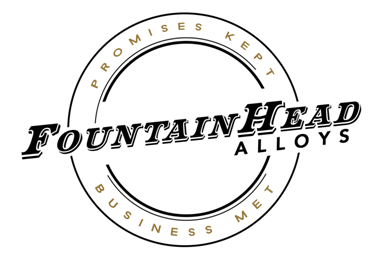UNS N07263 | AMS 5872E | ASTM B637 | HR401 | Alloy 601 | Nimonic PE11-16 | DIN 17742
Developed by Special Metals research teams at Wiggin Works, NIMONIC is a family of nickel-based alloys primarily consisting of nickel and chromium. NIMONIC alloys provide very good corrosion and oxidation resistance at high temperatures and its versatility allows it to be machined into a wide range of forms making it ideal for use across different industries.
Nimonic Introduction
NIMONIC alloys are composed of nickel and chromium, with the nickel content more than 50%. These alloys exhibit high-temperature low creep and are high performance alloys. Addition of metals like titanium, aluminium increases the strength of the alloy. The commercially available NIMONIC alloys are Nimonic 75, Nimonic 80A, 81, 86 and Nimonic PE11 and 16. Nimonic alloy 81 is a precipitation hardenable nickel-chromium alloy with titanium and aluminium as additives for strengthening. This alloy exhibits excellent corrosion resistance at high temperatures. The chromium content of the alloy is higher than other NIMONIC alloys; hence the alloy is corrosion resistant at high temperatures. Apart from being corrosion resistant, the alloy also shows good creep resistance and tensile strength at elevated temperatures.
NIMONIC alloys consist of nickel and chromium as the principal components. High-temperature low creep and good corrosion resistance are some of the characteristics of these alloys. Additives like carbon, titanium and aluminium enhances the toughness of the alloy. These alloys are characterised by their high-temperature low-creep and high performance. Additives like titanium and aluminium are used for enhancing the strength of the alloy. The NIMONIC alloy was first developed during the 1940s in England.NIMONIC alloys that are available commercially are Nimonic 75. Nimonic 90, Nimonic 100, Nimonic 80A, 81, 86, Nimonic 90, Nimonic PE11 and 16. The Nimonic alloy 75 is an 80/20 nickel-chromium alloy containing titanium and carbon as additives. This alloy was first introduced for use as turbine blades during the 1940s. It is readily fabricated and welded. This alloy exhibits good corrosion resistance, mechanical properties and heat resistance.
Industry Usage
Listed below are some of the major industries in which NIMONIC alloys find their main use:
- Aerospace
- Automotive
- Power Generation
Nimonic products
- NIMONIC alloy 105 (UNS N13021)
- NIMONIC alloy 115
- NIMONIC alloy 263 (UNS N07263)
- NIMONIC alloy 75 (UNS N06075)
- NIMONIC alloy 80A (UNS N07080)
- NIMONIC alloy 81
- NIMONIC alloy 86
- NIMONIC alloy 90 (UNS N07090)
- NIMONIC alloy 901 (UNS N09901)
- NIMONIC alloy PE11
- NIMONIC alloy PE16
- NIMONIC alloy PK33
- NIMONIC MP35N
chemical composition
| Element | Content (%) |
| Nickel, Ni | Remainder |
| Chromium, Cr | 18-21 |
| Iron, Fe | 5.00 max |
| Silicon, Si | 1.00 max |
| Manganese, Mn | 1.00 max |
| Titanium, Ti | 0.2-0.6 |
| Copper, Cu | 0.5 |
| Carbon, C | 0.08-0.15 |
Properties and Uses
Due to its ability to withstand very high temperatures, Nimonic is ideal for use in aircraft parts and gas turbine components such as turbine blades and exhaust nozzles on jet engines, for instance, where the pressure and heat are extreme. It is available in different grades, including Nimonic 75, Nimonic 80A, and Nimonic 90. Nimonic 80a was used for the turbine blades on the Rolls-Royce Nene and de Havilland Ghost, Nimonic 90 on the Bristol Proteus, and Nimonic 105 on the Rolls-Royce Spey aviation gas turbines. Nimonic 263 was used in the combustion chambers of the Bristol Olympus used on the Concorde supersonic airliner.
Nimonic 75 has been certified by the European Union as a standard creep reference material
FountainHead Alloys is ISO 9001:2015 approved. © FountainHead Alloys 1996

